
As you’ve probably seen from other posts on this site, I talk about Clickfunnels, its associated products and its affiliate program.
Clickfunnels – the short version – is a landing page and sales funnel builder that can also build membership sites. It’s the premiere such product available.
Affiliate marketers, like me, use Clickfunnels as do product creators and service providers.
The One Funnel Away Challenge is a course taught by the folks at Clickfunnels that explains what sales funnels are, why they’re so powerful and how they can boost the bottom line of any business with an online presence.
The latter half of the course teaches you how to build your first funnel using Clickfunnels. Clickfunnels has a 14-day trial period, so if you want to sign up for The One Funnel Away Challenge, don’t sign up for the Clickfunnels trial until you’re advised to in the course.
The Clickfunnels affiliate program is very popular with marketers because it’s so good. You can earn up to 40% in recurring commissions on sales of Clickfunnels, commissions of up to $1,000 on sales of associated products and if you bring in 100 members, you’ll get an additional $500 each month to cover the cost of buying your dream car.
Because the tool is so good, the retention rate is high, so it’s one way of building a passive income.
As I mentioned, a lot of affiliate marketers promote Clickfunnels, The One Funnel Away Challenge and other associated products.
So, that means in order to be able to increase your chances of earning a commission, you need to set yourself apart from all the other marketers out there.
There are two ways of doing that:
- Build a unique landing page that’s not a clone of someone else’s
- Offer a stonking (impressive, exciting, or very large) bonus package – preferably one that’s exclusive to you – to entice people to buy through your links
Promoting The One Funnel Away Challenge is the best way of getting people to sign up for Clickfunnels as paying subscribers.
Since the course introduces Clickfunnels to buyers, and they get to use the tool to build their first funnel, they know a lot more about the tool and what it can do by the end of the course, so they’re in a much better position to make an informed choice about sticking with it or not.
Promoting The One Funnel Away Challenge
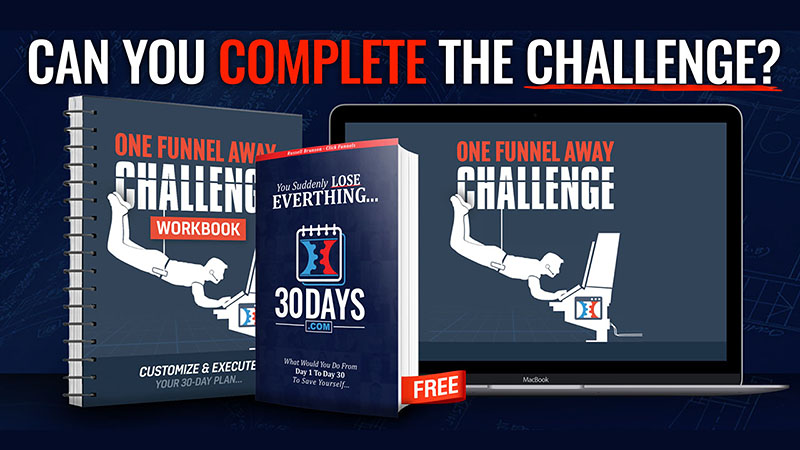
Any affiliate can grab their raw link in the back office and start promoting that. It will send visitors directly to the One Funnel Away page.
But that’s not the best approach.
It’s better to send people to a landing page that has an optin form on it so you can collect their email address first, before redirecting them to the One Funnel Away page.
This is how you build up your email list over time. Even if one of your subscribers doesn’t buy One Funnel Away, you can mail them reminders and other offers as long as they remain on your list.
It gives you more opportunities to make a sale of one thing or another.
So, with that in mind, I created two landing pages:
- The first was with Landing Page Monkey, a web-based tool for building landing pages ($99/year)
- The second was with InstaBuilder 2.0, a commercial WordPress plugin ($77 one time fee for a 3-site license; $37/year after year 1 for continuing support and upgrades)
So why did I use these tools when I have a Clickfunnels account? Why not use Clickfunnels to build the landing page?
I’m on the basic Clickfunnels plan which is $97/mth. That lets you create up to 20 funnels or up to 100 pages (across all funnels), whichever limit is reached first.
I already have 18 funnels in my account, with 85 pages used.
With only 2 funnels left that I can create, I want to build ones that can have more than one page so I’m making the most use of the pages I have left in my account.
I also didn’t want to dedicate a domain name to a single untested page.
The landing pages I built with Landing Page Monkey and InstaBuilder 2.0 are single pages.
Once a visitor enters their email address, they’re redirected to the One Funnel Away Challenge page.
So here’s what the page built with Landing Page Monkey looks like:
You can see it in action here.
One limitation with Landing Page Monkey is that you can only type in relatively short headlines and sub-headlines. And there weren’t enough characters allowed to list my bonus package.
The “CLICK HERE TO GET STARTED” button opens a second window that asks for the visitor’s email address. And it’s there that I had to list my bonus package:
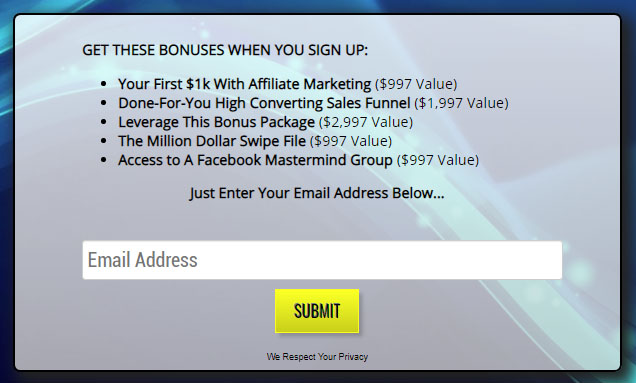
Since these pages are built using a web-based service, I don’t need to host the web pages myself, so I don’t need to have my own website to build and display pages.
With the InstaBuilder 2.0 WordPress plugin, I decided to build a single landing page rather than a multi-part page like I did with Landing Page Monkey.
BTW, if you’d like a secure WordPress site set up for free, I can do that for you here. You could then add a landing page builder plugin and start building your own pages.
This single page I created with the InstaBuilder plugin displays everything I need to convey in the one box.
InstaBuilder 2.0 takes the same approach to building pages as Clickfunnels. Both use a block-based system for placing and arranging different page elements.
If you wanted to get a feel for what it’s like building a page in Clickfunnels, InstaBuilder is a good primer.
The are differences of course in the page elements you can use and in how funnels are set up, and Clickfunnels provides additional features.
So, here’s the page I created with InstaBuilder:
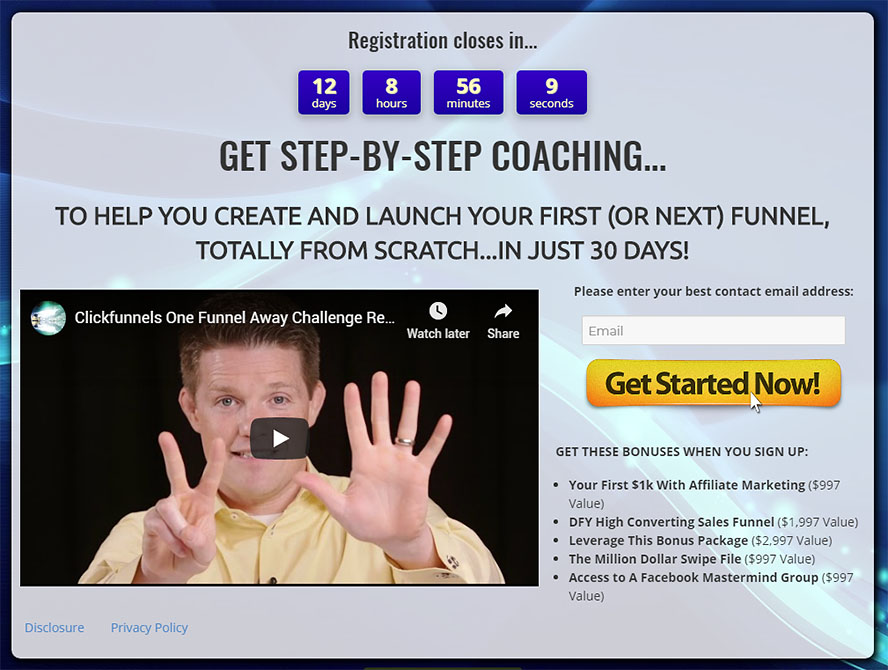
You can see the page in action here.
As you can see, this page has a timer counting down to when registration for The One Funnel Away Challenge closes for the next batch of students.
This is not something that’s available in Landing Page Monkey.
It can be emulated by using another tool called Conversion Gorilla which allows you to create attention bars that you can place at the top or bottom of pages.
I have the Pro version of the tool which allows me to put an attention bar over pretty much any webpage online, not just pages on sites I own.
So this means I can put attention bars on pages created with we-based services, like Landing Page Monkey.
The bars will appear based on the trigger you set – immediately when someone visits a page; after X number of seconds; when someone scrolls Y% down the page or when someone goes to leave a page.
You can see the Landing Page Monkey page with a countdown timer on an attention bar here.
Some basic animations are used on both squeeze pages to make them a little more dynamic.
Summing Up
There are plenty of other tools out there for building landing pages, from web-based tools like Systeme, Builderall, OptimizePress 3.0, Optin Monster and, of course, Clickfunnels to WordPress plugins like Elementor.
If you want to build landing pages, pick a tool you like and learn it inside out.
The web-based tools are all subscription based so you’ll be paying ongoing fees to use them and keep the pages you’ve built online.
You pay once for most of the WordPress plugins. Some will require annual fees so you can continue to get support and upgrades. But they won’t stop working if you decide to stop paying.
Landing pages and optin forms should be one of the tools in your marketing arsenal.
If you don’t build a list and engage with your subscribers, you are – literally – leaving money on the table.
The advantage of list building and doing email marketing is that you have so many more opportunities to make sales down the line.
It’s a more stable way of building a consistent income than relying on making sales just from your web pages.
If you’re new to all this, then I recommend you read these posts elsewhere on this site:
- How To Create Squeeze Pages The Stupidly Simple Way
- What Is List Building For? Is It An Essential Business Tool?
- How Do You Find a Good Affiliate Marketing Mentor?
- How Can I Promote Clickfunnels?
- Clickfunnels Review – Does This Sales Funnel Builder Live Up To Expectation?
- What Is A Sales Funnel And Do You Need One For Your Business?

All the best,
Gary Nugent
Check out my Instagram posts and reels here:
Follow me (@aiaffiliatesecrets) on Instagram
P.S.: Don't forget, if you want to create an internet income of your own, here's one of my recommended ways to do that:
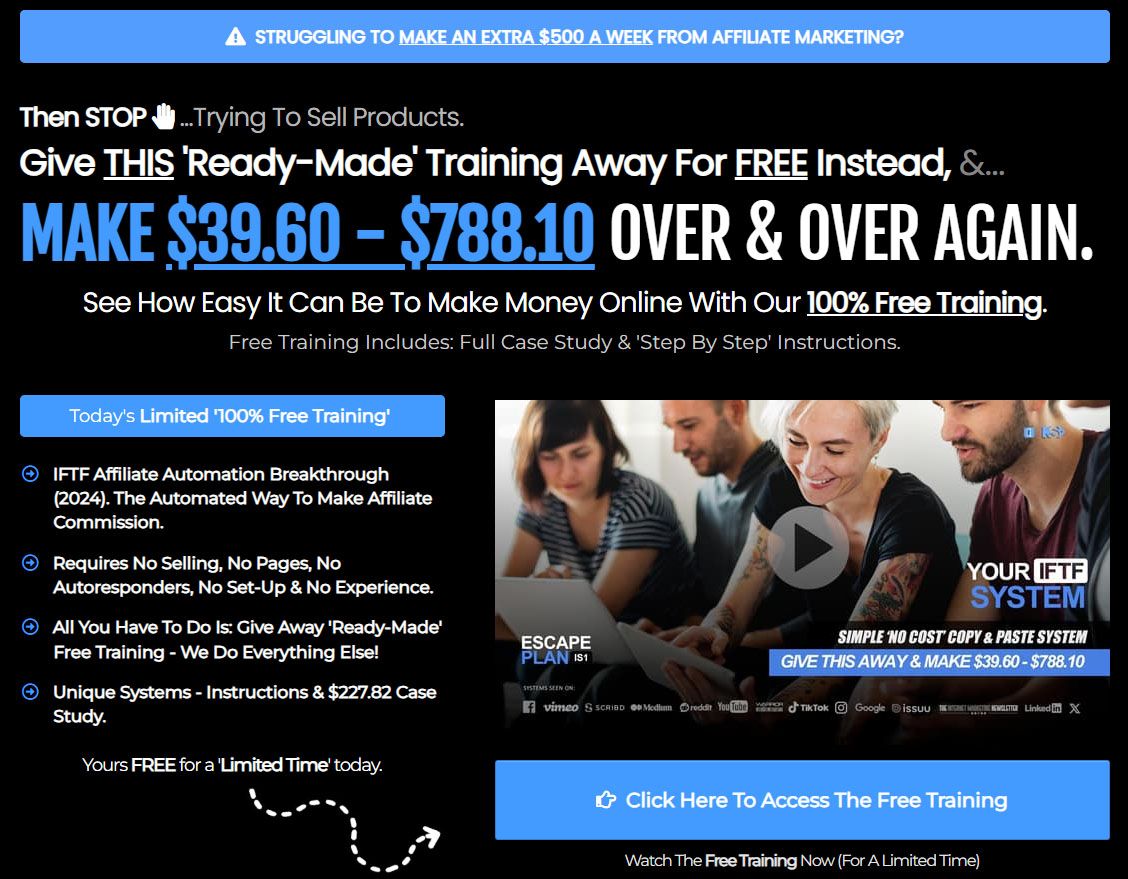

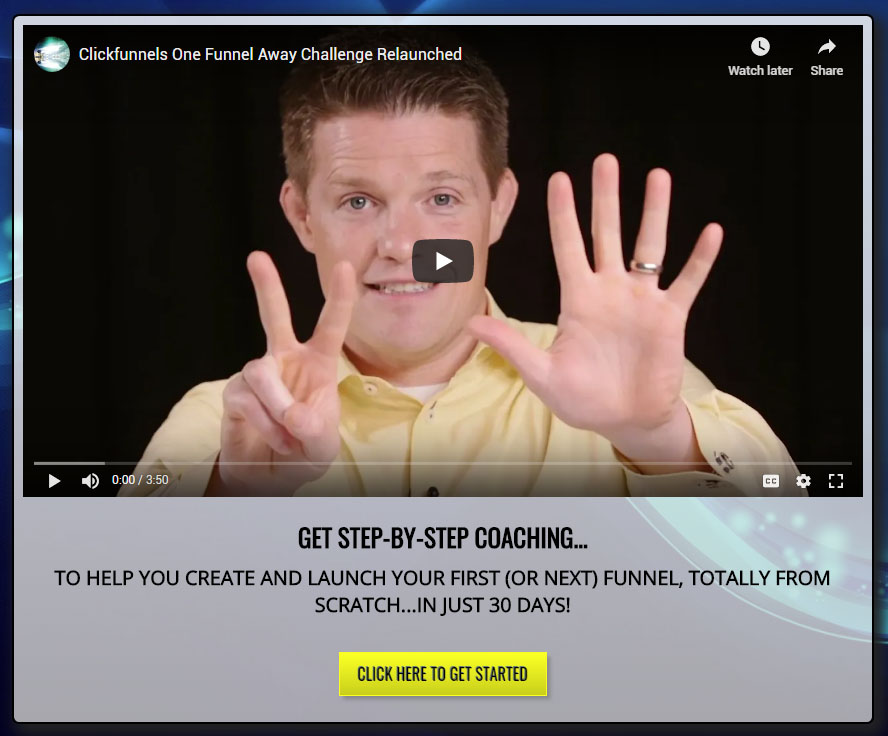
Hello there! I remain confused about what a funnel is; see how slow some people are? Clickfunnels sounds rather expensive; I’m thinking someone must give it a lot of trust to pay a yearly fee for it. I’m going to look more into what funneling is. Thank you for this information!
Hi Cathy, take a look at this post which explains what sales funnels are.
Essentially, a funnel is a filtering system. At the front end is all the traffic you send to the lead capture page. The message on that page will either resonate with people or not. If it does, then they’ll hand over their email address for whatever you’re offering.
The funnel then goes to work for you. Most funnels will have an email marketing component where a series of emails is sent out – each email might contain more information about a product or how to use it, or it might be a short course on something related to to product.
Each email is designed to remind your subscribers about that product. The more they’re exposed to a product, the more likely they are to buy it.
During this process your mailing list subscribers – your leads – become prospects. They move from being clueless to being potential customers.
If your funnel is doing it’s job, then your emails will convince some of those prospects into becoming paying customers.
A funnel is called a funnel because there a lot of people at the front end, hitting the lead capture page. But fewer people end up going through each stage. So you’ll have fewer subscribers than page visitors, fewer of those people who become prospects because others lose interest or the product’s not for them, and fewer of those prospects will become actual customers.
But, even if some subscribers never end up buying the product, they’re still subscribed to your list and you can send them more emails offering alternative products or related ones.
Contrast all this with having someone land on a blog page, click an affiliate link, decide to buy or not, and then they’re gone forever. You can never market to them again.
Using funnels just makes sense. They maximise you opportunities for getting a sale, something affiliate links on a blog page cannot do.
Yes, Clickfunnels is expensive, starting at $97/mth. But it is the best tool out there for building the types of pages you need in marketing/sales funnels.
People do trust Clickfunnels. It’s why they stay with them month after month. While for individual marketers, the fees do seem to be on the high side, don’t forget that Clickfunnels is a business tool and $97/mth, or even the $297/mth plan, is a small expense for a business. It will just be part of their marketing/advertising budget.
There have been pretenders to the Clickfunnels throne – there’ve been several alleged “Clickfunnels Killers” over the last couple of years, but none have lived up to that claim.
But you don’t have to use Clickfunnels to build your pages and funnels. There are other alternatives – I mention several of them in the above post.
If you have a WordPress site, get one of the page builder plugins I mention.
If you don’t use WordPress, you can subscribe to a more basic web-based page builder service – I mention a few of these in my post above as well.
Good to hear you found the post useful.
All the best,
Gary.
Okay, so I read the entire (big feat for me) article your link sent me to. I now know what a funnel is and why it’s worth an investment. I only offer content on my three sites. It would be nice to have people come back when I make a new post, but I don’t think I have any particular product to lure them toward, with the possible exception of a WA account. Thanks for all the advice you’ve offered!
Interesting site, Cathy. I’m a bit of a horror fan myself. I see what you mean about not having a lead magnet for that niche.
You can always just put an optin form or popup on your site and simply ask people to sign up for your mailing list. You would need to send them regular emails though to keep your subscribers engaged.
Do any of the companies you’re affiliated with offer any kinds of guides that you could use as a lead magnet?
If not, you can always create your own. That would certainly make for a unique freebie. If you don’t want to create something like this yourself, you could always hire a ghost-writer to create one for you. An example might be a guide or report on horror themed cosplay. Or the best horror gear for Halloween. Or costume tie-ins to movies and TV series.
You could send emails about with quick reviews of the latest horror flicks which link to an in-depth movie review on your blog. Same with horror novels. Run a monthly horror book club and ask for your subscribers’ opinions on the book.
There’s quite a lot of merchandise you could sell to that niche – DVDs & Blu-Rays, movie posters, horror fiction books and magazines, real-life horror (about serial killers, for example), local ghost stories and legends, tie-ins to ghost-hunter and paranormal TV shows, historical books, movies and TV shows about well and lesser known real-life horror (like the Salem Witch Trials, the Black Death in Europe, and so on). And then there’s always costumes.
Hope that gives you a few ideas! 🙂
Hey thanks for the post! I’m especially glad you added the video, as I am personally a visual learner, and was able to better focus on the video!
Hmmm, not sure what video you’re referring to, Jessie, as I haven’t added any video to this particular blog post. Maybe you read one of my other posts with an embedded video first?
Very interesting. Thanks. What provider would you recommend for email sequencing marketing once you get the email?
Hi Patrick, that comes down to personal preference and budget. If you’re in the Make Money Online / Internet Marketing / Affiliate Marketing niches, then do not use MailChimp. They don’t like those niches and will close your account and you’ll lose all your email leads.
If you’re just starting out, take a look at MailerLite – you can have a list of up to 1,000 subscribers and send out up to 12,000 emails each month for free. By the time you have 5,000 subscribers, they’re still inexpensive at $30/mth.
Both Aweber and Getresponse charge for managing subscribers, no matter how many or few you have. GetResponse is the better option as they charge $15/mth for up to 1,000 subscribers whereas Aweber charges $19/mth for up to 500.
Give ConvertKit a look as well. They’re more expensive than the other providers but they provide additional automation features that make things easier as the number of your subscribers grows.
You can always move your subscriber lists to a different provider if you need to. It’s not that complicated. So don’t feel that you have to pick one provider and stick with it for life.
There’s more info on the pricing structure, plans and features for these and other autoresponder providers in this post.